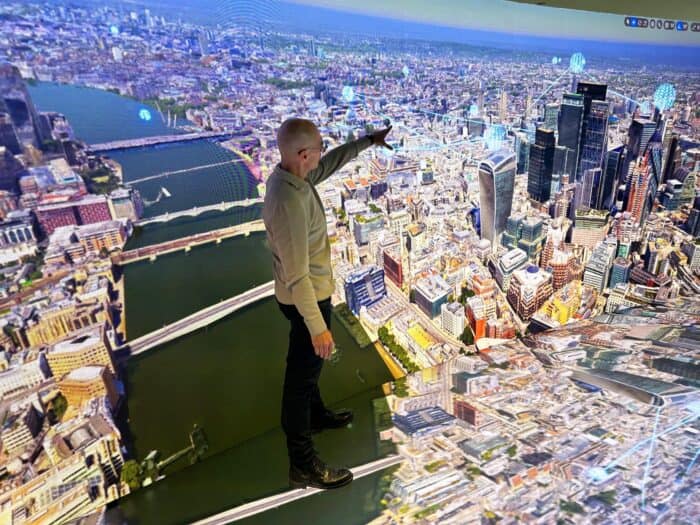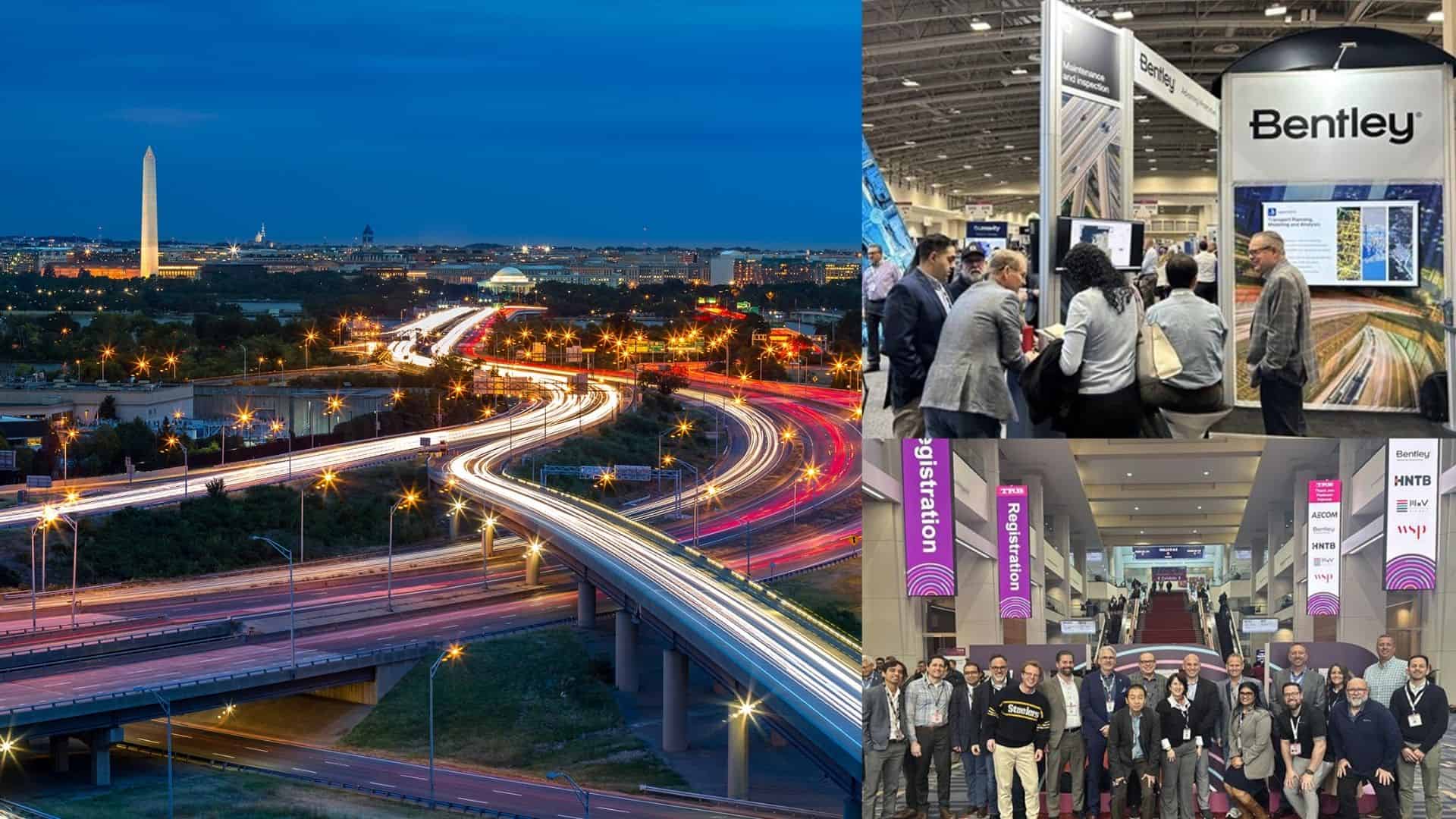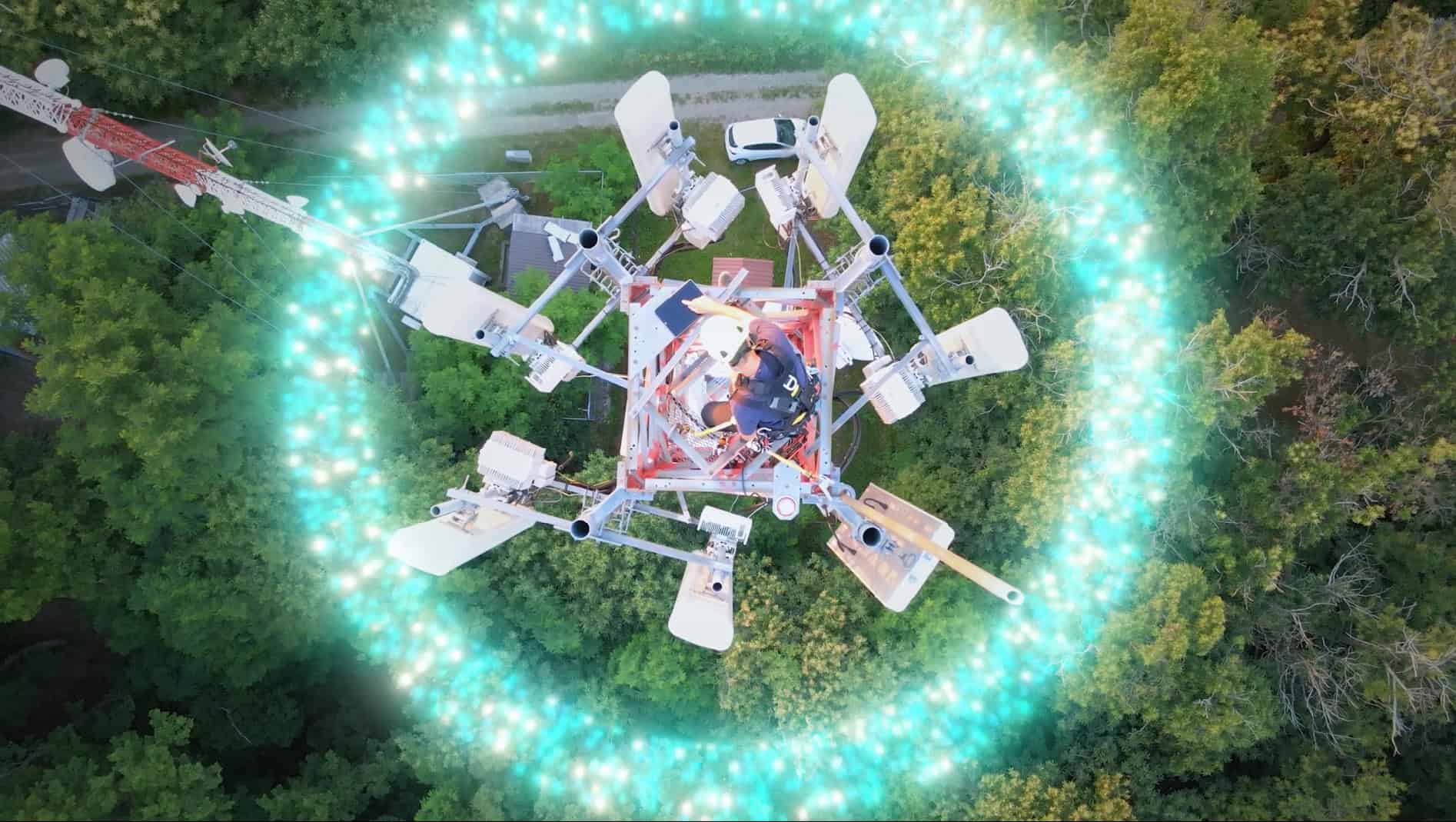The London skyline is hard to pin down. Turn your back on it even briefly and another skyscraper seems to pop up. It’s not an illusion. The Standard newspaper reports that every 10 days, on average, another 20-story-plus building gets the green light. With the capital’s face evolving so swiftly, Greg Demchak and his colleagues at Bentley Systems have created a digital representation of London that not only keeps pace with the city, but also visualizes its many potential futures.
Demchak is the vice president of the Emerging Technology Group at Bentley, an infrastructure engineering software company. Bentley builds infrastructure digital twins, which are virtual representations of real-world assets like roads, bridges and even entire cities, and Demchak’s work helps shape what a digital twin looks like. Educated as an architect, he has spearheaded architectural visualization for over two decades, work that culminated in leading Bentley’s innovation lab, iLab, where one of the areas of exploration includes developing next generations of immersive 3D experiences. “My entire career has been devoted to creating tools that enable people to create, visualize and interact with digital versions of the built environment,” he says.
That work just got a big boost with Bentley’s acquisition of the 3D geospatial company Cesium. Cesium has built a powerful open platform for creating 3D geospatial applications, and the company’s 3D Tiles open standard has been widely adopted. “A 3D geospatial view is the most intuitive way for owner-operators and engineering services providers to search for, query and visualize information about infrastructure networks and assets,” says Bentley CEO Nicholas Cumins.
Patrick Cozzi, CEO of Cesium, says that joining Bentley marked “an important milestone for Cesium as we continue our journey to create the best developer platform for the built and natural environment — founded on open standards and open-source technologies.”
 “We are using Cesium 3D Tiles for meshes to achieve massive scale 3D digital twins,” says Bentley’s Greg Demchak.
“We are using Cesium 3D Tiles for meshes to achieve massive scale 3D digital twins,” says Bentley’s Greg Demchak.Transformative vision
At its core, the London digital twin is a high-fidelity, digital representation of the city’s buildings, streets and parks. Demchak and his team used Bentley’s iTwin platform for building infrastructure digital twins to assemble the model using data from engineering models, maps and other sources. Users can explore tiny details of skyscrapers, see underground and zoom out to take in the whole skyline.
How can something of such complexity stream so fluidly? This is where Cesium and its geospatial platform and 3D Tiles come in. For example, Cesium’s open 3D visualization platform can work in tandem with video game engines like Epic Games’ Unreal Engine. Depending on the need and the level of detail, the data stream can be adjusted to render only the geometric data needed to complete the requested view. “We are using Cesium 3D Tiles for meshes to achieve massive scale 3D digital twins,” Demchak says. “It illustrates the transformative power of integrating the visual capabilities of the latest geospatial and gaming technology with complex architectural and engineering models.”
Demchak says that just two years ago, getting models into game engines for visualizations meant importing files so large that they’d often crash your system. “Our grand aim is to create an open innovation platform for city planners, developers, the public and students — to help everyone get on the same page and engage with the city as it is, and to help us reimagine the city as it grows and adapts,” he says.
On the right track
It’s a cliché to say that a given innovation is limited only by one’s imagination, but with digital twins — and indeed the wider “infrastructure metaverse” — the cliché is true. Imagination and data availability, that is. Once the foundational data layer of the digital twin is established, the options of adding other data are virtually limitless.
One of the strengths of digital twins is their ability to utilize Application Programming Interfaces (APIs) to automate the flow of geolocated data into the model from a vast array of sources, including architectural models and drawings, engineering databases, sensors, databases and IoT devices. In cities like London, the data can include pedestrian and traffic flows, transport timetables, utility networks, real-time air quality measures, power consumption estimates, temperature and weather (actual and forecast), and even the projected impacts of sea-level rise. Even the health of London’s rail tracks can be illustrated with a simple color-coding system. And any of these layers can be toggled on or off, depending on your area of interest and access permissions.
As we speak, Demchak is on the 43rd floor of 8 Bishopsgate, an extraordinary tower in central London that serves as Bentley’s UK headquarters. It is the only skyscraper in the world to attain BREEAM Outstanding and an EPC A rating — a triumph in sustainability, Demchak says before riffing on visualization techniques to increase the efficient use of the building. “Take this room I’m in,” he says, indicating a conference space behind him – the hub of Bentley’s new ‘experience center’ with a floor-to-ceiling digital screen that displays the London digital twin. “If we put a camera in here simply to record the number of people in this space over time, we could visualize that data in the digital twin and zoom in to see a ‘heat map’ of how people are using, or not using, this space.”
Demchak has also led the development of a digital twin for Singapore, which included a visualization of the solar energy potential across the entire island, drawn from Google’s Solar API.
Far away, so close
In Japan, Komatsu is the largest construction equipment manufacturer in the country and the second largest in the world. The company uses Cesium’s 3D geospatial technology to monitor construction sites around the world. The technology helps Komatsu track changes over time, compare architectural plans with real-world data, and run precise and near real-time measurements. “With Cesium as part of Bentley, we can further enrich our Smart Construction digital twins with engineering models, subsurface data and more for safer and more efficient construction projects,” says Chikashi Shike, executive officer for Smart Construction Promotion Division at Komatsu.
Bridging digital divides
Cesium is also a leader in promoting open standards, such as 3D Tiles for visualizing massive 3D geospatial data. These standards were adopted as a community standard by the Open Geospatial Consortium (OGC) in 2019. Peter Rabley, CEO of OGC, said that as the infrastructure sector becomes more data-centric, the importance of an open ecosystem will only increase. “As the leading voice for open standards and interoperability in the geospatial community, OGC welcomes the ongoing commitment of Bentley and Cesium to solve global challenges through open, interoperable platforms,” Rabley says.
Back in London, the future shape of the British capital remains to be seen. But Demchak is confident it will be explored first through digital twins. His team is working to gain access to planned new developments across London. “For example, we could make the next 10 years of big, planned developments an optional visual layer in our digital twin,” he says. “Most people currently have no way to see this future, to access and perhaps influence what’s coming.”
Bentley’s digital twin of London will soon be ready for a variety of stakeholders to explore, says Demchak, and it will only continue to grow. “This is an evergreen project for London. As new data streams become available, we will connect them to enrich the model. I aim to make it an indispensable tool for visualizing, understanding and shaping the city’s future.”








